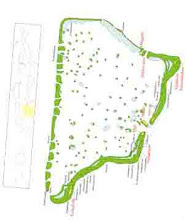
In New York. Concrete jungle where dreams are made of, Theres nothing you can’t do, Now you’re in New York, these streets will make you feel brand new, Big lights will inspire you, lets hear it for New York, New York, New York One hand in the air for the big city, Street lights, big dreams all looking pretty, no place in the World that can compare, Put your lighters in the air, everybody say yeaaahh come on, come, yeah, hiphop.com cities is a pity half of y’all won’t make it, me i gotta plug Special Ed and i got it made, If Jeezy’s payin LeBron, I’m paying Dwayne Wade, 3 dice cee-lo 3 card Monte, labor day parade, rest in peace Bob Marley, Statue of Liberty, long live the World trade, long live the king yo, I’m from the empire state thats…Welcome to the bright light...
From Alicia Keys song “Empire State of Mind Lyrics”


















